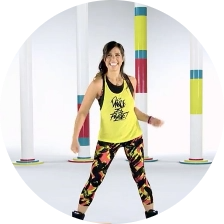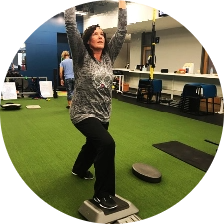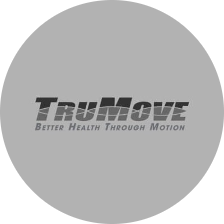Services
Arthritis Therapy Treatment

Arthritis is a condition where pain, inflammation, or both occurs in a joint. According to the CDC, 22.7% or 54.4 million Americans suffer from this condition.
Those who have this condition may need a combination of arthritis therapy and medication to manage the symptoms and decrease the damage to the joints.
Most Common Types of Arthritis
Osteoarthritis
Osteoarthritis is by far the most common type of arthritis, affecting 32.5 million adults in the US.
This condition usually develops in patients in their mid- to late-40s as a part of the normal aging process. It is also more common in women compared to men, as well as to people with a family history.
However, osteoarthritis can happen at any age. It can be brought on as a result of an injury or other joint-related conditions including rheumatoid arthritis and gout.
This type of arthritis usually develops in the smooth cartilage that lines the joints. Eventually, when the lining starts to thin out, the tendons and ligaments around need to work harder to sustain movement.
When the cartilage loss is severe, an x-ray will show joint space narrowing. This is often called bone-on-bone by surgeons. Fortunately, research indicates that this condition does not necessarily result in pain if the body has proper flexibility and movement.
As part of the normal aging process, osteoarthritis commonly affects joints in the knees, spine, hips, and hands.
Rheumatoid Arthritis
Rheumatoid arthritis or RA is the second most common type of arthritis, affecting around 1.3 million Americans.
Like osteoarthritis, RA affects women more than men – they are two to three times more likely to develop this condition. Women usually get the condition some time between the ages of 30 and 60. Men tend to develop it later. But it can happen at any age; even small children can develop this condition.
In this type of arthritis, the immune system in the body attacks an affected joint. It targets the outer covering or synovium first, leading to swelling and pain.
Over time, this spreads across the joint which can eventually change the shape of the joint and cause the cartilage and even the bone to break down.
The damage that started in RA may also affect other tissues and organs in the body including the following:
- Eyes
- Skin
- Blood
- Lungs
- Heart
- Vascular system
Around one-fourth of deaths in people with this condition are caused by these infections.
Other Types of Arthritis
The following are other notable forms of arthritis:
- Psoriatic arthritis is an inflammation of the joint that commonly affects people with psoriasis.
- Enteropathic arthritis is a chronic condition associated with inflammatory bowel disease or IBD. Around one in five people with Crohn’s disease or ulcerative colitis will get this condition.
- Reactive arthritis causes inflammation in the joints, eyes, and urethra. It usually follows an infection of the bowel, genital tract, or throat.
- Secondary arthritis develops after an injury to the joints. It may also develop years after an injury has occurred.
Known Causes of Arthritis
Osteoarthritis is attributed to the normal wear and tear of joints as a person gets older. An injury or infection to the joints also hastens the development of this condition. People with a family history of osteoarthritis also have a higher likelihood of experiencing it.
The good news is osteoarthritis does not have to equal pain and if you do have pain with arthritis it can be relieved by improving the flexibility and joint space in your body.
On the other hand, RA is considered an autoimmune disorder. Although the exact causes of autoimmune conditions are unknown, some genetic markers have been found to increase the risk of developing RA by as much as five times. These markers include:
- High erythrocyte sedimentation rate or ESR
- High levels of C-reactive protein or CRP
- High levels of antibodies to cyclic citrullinated peptide or CCP
Diagnosing Arthritis
Doctors will assess the following when diagnosing this condition:
- The range of motion in the joints.
- Areas of tenderness or swelling around the joints.
- Overall health evaluation to determine whether symptoms are caused by a different condition such as a movement disorder from stiffness or weakness in the soft tissues surrounding the joints.
- Imaging examinations can also help in identifying arthritis. An X-ray, MRI, or ultrasound scan can reveal the following information:
- Cartilage breakdowns
- Injuries to muscles, ligaments, or tendons
- Inflammation in the soft tissue
Treating Arthritis
Doctors may recommend the following treatment options for people suffering pain because of arthritis:
- Medication – Doctors can prescribe a range of medications for pain management including analgesics, nonsteroidal anti-inflammatory drugs, counterirritants, disease-modifying antirheumatic drugs, biologics, or corticosteroids. These drugs are taken to reduce pain, reduce inflammation, or both.
- Diet – Doctors can also recommend a change in diet. Although there is no particular diet that treats this condition, some food types like fish, nuts, seeds, and beans are suggested. Nightshade vegetables like tomatoes are linked to arthritis pain and consumption of which may be discouraged.
- Surgery – In cases where damage to the joint is severe, the doctor may also recommend surgical treatment to replace said joint with an artificial one. Another surgical option is a joint fusion where the ends of the bones are permanently locked together.
These traditional treatments are only done to manage the pain and prevent further damage to the joints. And unfortunately, they are only effective 45% of the time.
On the other hand, our treatment options work to address not just the pain, but also its underlying cause. This results in longer-lasting relief.
Dry Needling
Monofilament needles activate certain trigger points or local contractures in the muscle fiber. This alleviates pain in a safe and virtually painless way. This treatment is especially effective on musculoskeletal presentations.
Deep muscle stimulation
Mechanical vibrations are introduced to penetrate muscle tissue. This stimulates proprioceptive functions which improve circulation and lymphatic flow. It also facilitates tissue regeneration and improves the lactic acid cycle that causes pain.
Heat and cold therapy
These therapies change the circulation to relieve pain. Heat packs relax muscles and promote tissue healing, while cold packs reduce swelling. Depending on the need, one of both of these may be recommended.
McKenzie method
This series of exercises are targeted to alleviate pain in the long-term. They help centralize pain and other symptoms towards the body’s center line before it is completely eliminated. This treatment also works to restore mobility.













